Tucson Hot Rod Restoration

John Sewell, one of the three co-owners/partners of Hi Speed Rods & Customs, inside the showroom that is filled with classic cars and auto memorabilia.
photo: Steve Renzi
“People remember what their grandfather drove and they want that car. That’s what it’s all about and that’s what we do. Ninety percent of the people who come in here, it’s because of their emotional ties and memories,” said John Sewell, one of the three co-owners/partners of Hi Speed Rods & Customs.
Stepping inside Hi Speed is like walking into an American automotive museum. Lined up on display is a score of classic cars: big steel, gleaming chrome, sleek lines and raw automotive power. Mounted on the walls are hot rod posters, a gigantic vintage gas station sign that reads: Nothing dampens good service, historic photographs and an early Harley Davidson motorcycle.
However, unlike a museum where the displays can become static and stale, this is a business that works. Some of these classic cars are for sale and some are being restored for individual owners. Hi Speed is a full-service restoration center where hoods are chopped and lowered, new dashboards are designed and made, custom upholstery is installed, metal is straightened and aligned, dents and dings are fixed, broken glass is replaced and artistic paintwork is created and applied. Everything – except some specialized steel fabrication – is done on site.
On some restoration projects, every piece, down to every nut and bolt, is taken apart, cataloged, fixed if needed, plated, and then put back together. It’s like putting Humpty Dumpty back together again, except this time, Humpty needs a Hemi engine, positraction, and an electronic ignition.
“We’ve worked on some cars, well over a thousand hours and we’re working on one now that may go over two thousand,” said Sewell.
For this interview, we’re sitting in a back office at Hi Speed. On the wall is a tattered 48-star American flag found in the trunk of an old Mercury. The building, located at 829 E. 17th St., is 30,000 square feet and used to be the old Rainbow bread bakery. It’s been Hi Speed since 2005. This business requires a lot of traveling and John’s two partners are out of town.
“We’re always searching the country for collectible cars and motorcycles,” said Sewell. Vigilance, knowledge and quick decisions are required, he explained. “In this business, the first guy there with the cash wins.”
Anthony Ribeau is the partner who specializes in buying and selling. Restored autos and vintage Harley Davidson motorcycles from Hi Speed attract customers worldwide and are often placed in prestigious car auctions. However, unknown to most people, these auctions are like playing roulette, according to Sewell. Auctions are a gamble because there is no guaranteed cash reserve – whatever the car sells for, is what you get – and if you don’t know cars, or what people want, you can lose money, big time.
This is where the third partner, Sewell’s son “Johnny Vegas,” comes in. Vegas has established a well-known reputation as a car, boat and motorcycle custom painter and artist. One classic restoration done at Hi Speed and painted by Johnny Vegas and crew, was a 1950 two-door Mercury Coupe, completely painted an eye-catching wasabi green, that sold for a world-record $330,000 at the Barrett-Jackson car auction in 2011. That car is now in a museum in Grand Junction, Colorado.
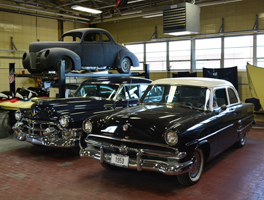
Restored autos and works-in-progress. photo:Steve Renzi
Knowing what people want is the key to their success. Restored autos from Hi Speed have also been represented in invitation-only corporate car shows. One photograph in the main office shows one of their vehicles parked right next to the one and only Batmobile. How cool is that?
“We put in air conditioning in a lot of older cars. People may love their grandfather’s old car, but they want it to drive like a modern car. Take an original 60s muscle car for example, we’ll put in a state-of-the-art suspension, new drivetrain, stereo system, electronic ignition and fuel injection. After we get done with it, press the throttle and you’ll get a handful,” said Sewell, a man who has been a NASCAR short-track racer – top speed 130mph – and who once owned a 1966 Chevy Nova, a street legal drag car that had a parachute release in the back.
When asked what his ultimate find would be, Swell said: “You might be surprised, but it’s an early 1930s, three-window Ford. Painted Henry Ford black, believe it or not, they painted the cars with a paint brush. Most Fords of that era (1932-1935) had five windows, the three-window Fords are extremely rare.
“A lot of our customers have become my friends. We’re always looking for vintage cars and motorcycles. We don’t like to see an old car forgotten in a yard and wasting away. It’s a part of American history. We want to fix it and put it back on the road.”
Hi Speed Rods & Customs is located at 829 E. 17th St., (520) 623-1973 and online: HiSpeedCustoms.com. Hours of operation are Monday-Friday, 8 a.m. to 5 p.m.


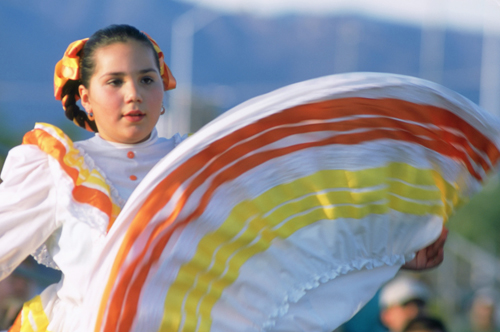
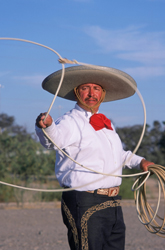
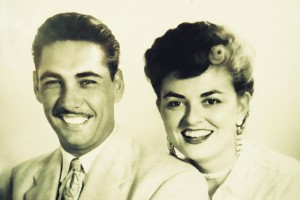
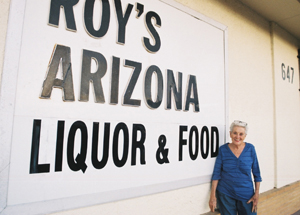
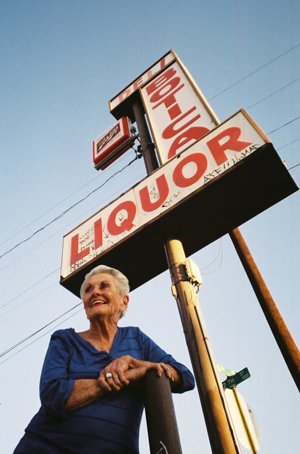
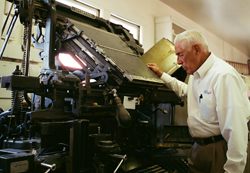
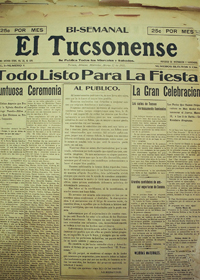




Also find us on...